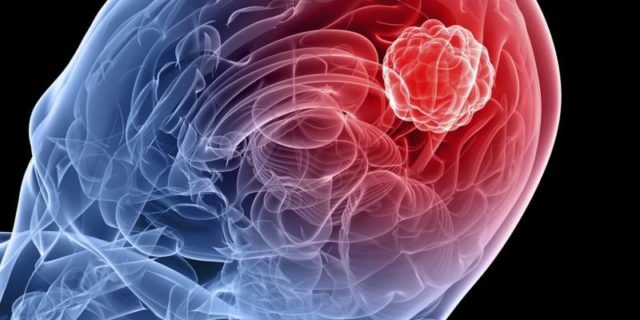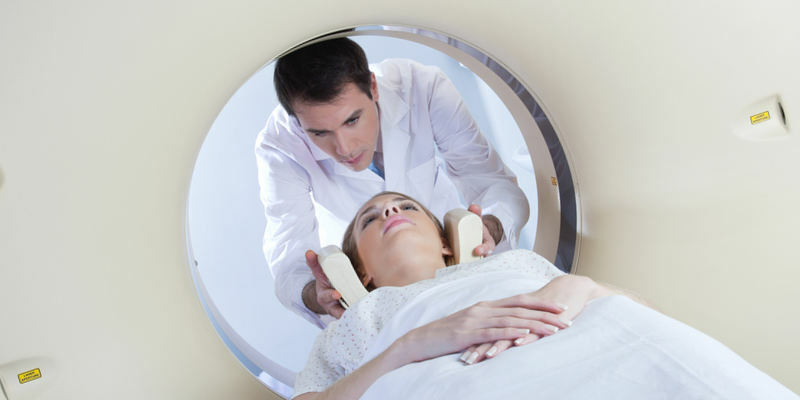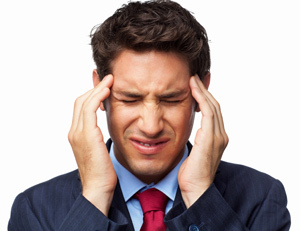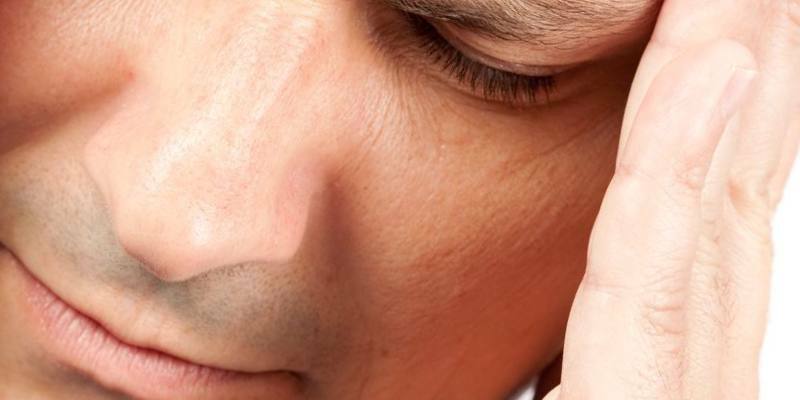
Contents of the page

1 Nervous system diseases - varieties
Diseases of the nervous system are a vast group of independentpathologies, each of which is distinguished by a certain symptomatology and etiology. This is explained by the extreme branching of the structure, each subsystem of which is unique. The nervous system permeates the entire body, ensures its vital functions and the normal functioning of all organs and systems. This is a very complex and, at the same time, fragile and vulnerable structure.
The slightest failure in its operation is fraught with serious consequences, and severe pathologies can lead to disability and even death. Unfortunately, neurological pathologies are widespread among the population, they arise regardless of gender and age and have the most negative impact on health. Today we will consider the causes, symptoms and methods of treatment of the most common diseases.
Diseases of the nervous system - varieties

Any living organism can not exist without a nervous system. It is thanks to this structure that vision, hearing, smell, touch, taste, muscles, and all human organs work. The nervous system consists of three basic elements, according to which all pathologies can be conditionally divided into the following subgroups:
- diseases of the central nervous system;
- diseases of the peripheral nervous system;
- diseases of the vegetative system.
- The central nervous system( CNS) consists of the brain and spinal cord. The brain shells and cerebrospinal fluid perform protective functions and play the role of peculiar shock absorbers, which soften all sorts of external influences that can lead to damage to vital organs.
- The peripheral nervous system( PNS) provides two-way communication of the CNS with all organs and systems of the human body. Anatomically, the PNS consists of nerve nodes( ganglia), spinal and cranial nerves, as well as other nerve plexuses located outside the spinal cord and brain.
- The vegetative system is responsible for the functioning of muscles that we are not able to control at will( heart muscle, various glands).Its structures are located both in the central and peripheral parts of the nervous system, and the main activity is aimed at maintaining the stability of the internal environment of the body( body temperature, pressure).
Types of diseases

The list of diseases of the nervous system is extensive, conventionally they can be divided into several main types:
- Vascular diseases of the nervous system. These are dangerous pathologies, which, nevertheless, are among the most common ailments. Diseases of this group are associated with impaired cerebral circulation( stroke, ischemic stroke, cerebral circulatory insufficiency, hypertensive crises, etc.).Vascular disorders threaten with serious complications and often become the cause of disability or death. By the number of deaths they occupy the third place in the overall structure of deaths of the population.
- Infectious diseases of the nervous system. Develop against the background of infection with pathogenic microorganisms( viruses, bacteria, parasites, fungi).The brain most often suffers from neuroinfections. The spinal cord and the peripheral nervous system are much less involved in this process. The most common diseases are encephalitis, meningitis, polyneuritis, cerebral palsy. They lead to persistent disturbances of hearing, vision, intelligence, motor activity.
- Hereditary diseases. They are divided into chromosomal and genomic. The most famous representative of chromosomal pathology is Down's disease. Genomic diseases affect the neuromuscular system and can cause dementia, damage to the endocrine system or the musculoskeletal system.
- Traumatic lesions. This is damage to the brain or spinal cord due to injuries and bruises. To this group include concussions and bruises of the brain, craniocerebral injuries of varying severity.
- Chronic diseases. This category includes demyelinating diseases of the nervous system associated with damage to the myelin sheaths of the nerves. This process leads to such diseases as multiple sclerosis, leukoencephalitis, encephalitis and often leads a person to disability. The same group includes degenerative diseases of the nervous system, which are characterized by a gradual progressive death of neurons. The most famous diseases are Parkinson's disease, Alzheimer's disease and other severe pathologies that lead to irreversible organic disorders and complete degradation of the personality.
What causes affect the state of the nervous system and give impetus to the development of the disease? The appearance of each pathology is preceded by its own factors and features of development. We can only name common causes that can trigger the mechanism of the disease.
Reasons for

The causes of neurological pathologies are very diverse, among the main provoking factors can be identified:
- vascular disorders and related diseases( hypertension, osteochondrosis, atherosclerosis, etc.);
- heredity;
- suffered from infectious diseases;
- tumor processes;
- malnutrition, avitaminosis;
- chronic diseases( endocrine, cardiac, renal);
- effects of poisons and toxins;
- uncontrolled intake of medications;
- poisoning with salts of heavy metals( thallium, lead, mercury);
- physical and mental fatigue;
- chronic stress.
Any of these causes can lead to marked changes in the functioning of the nervous system and cause disease.
Symptoms of nervous system diseases

The clinical picture of the disease depends on many factors, and each of the pathologies has its own characteristics and manifestations. Virtually all neurological disorders are accompanied by a pain syndrome of varying intensity( migraine, neck, back, muscle), dizziness, or impairment of the musculoskeletal system. Movement disorders are manifested by paresis( weakening of muscle strength), tremor( trembling of limbs or trunk), paralysis( complete immobility), or chorea( involuntary rapid movements).
Severe lesions of the nervous system are accompanied by a violation of intelligence, speech, mental activity, may manifest as epileptic seizures, hysterics, behavioral disorders and psyche. The most dangerous consequences are vascular diseases, when a stroke develops as a result of cerebral circulation. Similar conditions are accompanied by characteristic symptoms - a violation of coordination of movements, lack of tactile sensitivity, difficulty speech, memory loss. If you do not recognize the signs of a stroke in time and do not provide medical help, the probability of a fatal outcome is high.
Many neurological diseases negatively affect vision, hearing, smell and other senses, change character and behavior. A sweet and friendly person can become sharp and irritable, negatively perceive any changes, hardly understand and absorb new information.
Symptoms of a nerve disease can appear suddenly and brightly, or develop gradually, for several years. Everything depends on the nature of the pathology, the severity of the symptoms and the individual characteristics of the organism. But in any case, a specific disease of the nervous system causes dysfunction of those organs with which it has a direct connection.
Heredity and congenital nature of
Among pathologies of the nervous system, a fairly large percentage of diseases associated with heredity. These are such ailments as Down's syndrome or Wilson's disease. The most terrible symptoms manifests itself Huntington's disease - the disease begins suddenly, accompanied by the appearance of jerky involuntary movements, mental disorders that can not be treated( up to complete degradation of the person).
Diseases of the nervous system in children are often congenital. They arise due to chromosomal or genetic abnormalities or as a result of exposure to the fetus of infectious agents during pregnancy. An example is cerebral palsy( cerebral palsy), when the nervous system suffers even at the stage of intrauterine development.
In recent years, school children are increasingly suffering from neuroses, which develop due to stress, high training loads, physical and mental fatigue.
Important: Treatment of such neurological disorders in children should begin with the first symptoms. As soon as an accurate diagnosis is made, parents should throw all their energy into the fight against the disease, which hinders the growth and development of the child.
Diagnostic methods

Diagnosis of diseases of the nervous system begins with a visit to a neurologist. During the conversation, the expert analyzes the patient's consciousness and intellect, tests reflexes, sensitivity, orientation in time and space, and identifies deviations that indicate a possible disease. The formulation of the correct diagnosis requires a number of laboratory and hardware studies that fit into the concept of topical diagnosis of diseases of the nervous system.
In order to identify the causes of the disease, the patient is referred to an MRI or CT of the brain. These methods are effective in diagnosing craniocerebral injuries, brain tumors, strokes.
A clear picture, which allows one to judge vascular disorders, is provided by such research methods as ultrasound dopplerography of cerebral vessels, rheoencephalography.
Electroencephalography is used to detect tumors, brain contusions, epilepsy. Such a method as electromyography is used in cases of suspected peripheral nerve damage and the development of neuromuscular diseases.
Laboratory methods detect chromosomal or genetic abnormalities, examine blood or urine. Analysis of cerebrospinal fluid for transparency, cellular composition, electrolyte and protein content allows you to determine the cause of the disease and make the correct diagnosis.
Treatment of
The treatment regimen for neurological pathologies depends on their type, clinical picture of the disease, the severity of the symptoms, the individual characteristics of the patient, the presence of concomitant diseases, possible contraindications and other nuances. Many severe diseases of the nervous system require intensive care in a hospital setting, if necessary, perform surgical operations. Other ailments can be treated at home.
The basis of therapeutic activities is the reception of medical products, physiotherapy treatment, exercise therapy, massages, lifestyle and nutrition adjustment. Such symptomatic therapy is aimed at eliminating the pain syndrome and other unpleasant manifestations of the disease and is carried out with the aim of improving the general condition of the patient. Let us dwell on the principles of treatment of the most common pathologies:
Neuritis

Neuritis( neuropathy) is a disease associated with inflammation of the peripheral nerves. Lesions of the limbs, facial, occipital or intercostal nerves can be affected. Neuritis develops due to hypothermia, infections, injuries, vascular disorders, intoxication of the body.
The main symptoms are a loss of sensitivity in the area of the lesion, motor disorders, paralysis. Severe multiple inflammation of the nerves( polyneuropathy) can develop against the background of diabetes mellitus, poisoning with toxic substances or alcohol.
Treatment of neuritis begins after the establishment of a cause that provokes an inflammatory process. Therapy is based on the intake of anti-inflammatory, analgesic, antiviral, sedative drugs, multivitamin complexes. Widely used physiotherapy procedures: electrophoresis and ultraphonophoresis, UHF, pulse currents. To restore muscle functions are shown massages and exercise therapy.
Neuralgia

Neuralgia is a disease accompanied by the appearance of sharp, sharp pains along the course of the affected nerve. The main difference from neuritis is that with neuralgia there is no blockage of the basic functions of the nerve. The cause of the disease are hypothermia, colds, tumors, trauma, intoxication of the body. The disease often develops against the backdrop of pneumonia, angina pectoris, myocardial infarction.
There are neuralgia of cranial, femoral and intercostal nerves. Intercostal neuralgia is accompanied by a persistent pain syndrome in the spine, with pain intensified by deep inspiration and the slightest physical strain.
Complex treatment of the disease is based on the use of anticonvulsants, muscle relaxants, analgesics and sedatives. Methods of physiotherapy include the treatment of infrared rays, acupuncture, therapeutic massages.
Migraine

Migraine is a common neurologic disease in which a severe headache does not release for several days. Pain syndrome occurs against the background of impaired functions of the nervous system, caused by a strong emotional shock, stress, overexertion. The disease can be transmitted by inheritance, mainly on the maternal line.
The patient is tormented by a sharp, throbbing pain in the temporal region, intolerance of sharp sounds, smells, bright light. These symptoms are associated with weakness, nausea, polyuria. In the process of treatment, the patient is prescribed anti-inflammatory drugs, serotonin agonists, antispasmodics, strong antimigraine analgesics, recommend the adjustment of lifestyle and nutrition.
Intracranial hypertension

Disease characterized by increased intracranial pressure. The mechanism of its occurrence is associated with a violation of the development of cerebrospinal fluid, the excess of which begins to press on the brain, and causes characteristic symptoms. An impetus to the development of pathology can serve as a viral infection, developmental abnormalities, tumors, craniocerebral trauma. Often, the manifestations of intracranial hypertension accompany a person from birth. At the same time there are strong bursting headaches, nausea, dyspnea, chills or excessive sweating, emotional instability, depressive conditions.
Treatment is selected by a neurologist, taking into account the severity of the symptoms. Traditional medicamental treatment includes the administration of drugs whose action is aimed at reducing the production of cerebrospinal fluid. In combination with diuretics such treatment allows to normalize intracranial pressure. If traditional therapy does not help, resort to surgical methods and perform lumbar punctures.
Vegeto-vascular dystonia

This pathological condition is associated with a violation of the functions of the vegetative and cardiovascular system. Symptoms of the disease are manifested in connection with the stress factor, hormonal changes in the body or due to increased nervous excitability, disturbance of sleep and rest, bad habits, unfavorable environmental conditions. Often, the appearance of vegetative-vascular dystonia is associated with a hereditary predisposition.
The disease is manifested by general weakness, drowsiness, headaches, dizziness, tinnitus. The course of the disease is accompanied by jumps in blood pressure, fever, unconsciousness, mood swings, panic attacks.
Therapy is based on the use of sedatives, in severe cases, tranquillizers are prescribed. The main emphasis in the treatment of vegeto-vascular dystonia is made on observing the regime of the day and a certain diet, increasing motor activity, abandoning bad habits, adjusting the entire way of life as a whole. It is useful to eat foods rich in magnesium and potassium, do massage, physiotherapy, visit the pool, gym. A good effect is given by yoga, fitness, breathing practices.
Ischemic stroke

Severe cerebrovascular disease that threatens disability or fatalities. Unfortunately, this ailment in recent years increasingly affects quite young and workable people. It occurs against the background of acute circulatory disturbances in the brain and is accompanied by tissue damage and cerebral infarction due to the cessation of blood supply to its departments.
Stroke can cause vascular disorders, atherosclerosis, hypertension, blood diseases. Characteristic symptoms of developing stroke are severe headache, nausea, vomiting, impaired coordination of movements, speech, loss of sensitivity. A person can not give his name, smile, keep his balance, raise and hold his hands in a certain position. When this symptom appears, urgent hospitalization is necessary. If you provide qualified medical care within the first 2 hours, the chances of saving the patient are increased.
Prevention of diseases of the nervous system
 Photo: increased physical activity
Photo: increased physical activity A number of preventive measures will help to avoid diseases of the nervous system:
- a healthy lifestyle;
- physical education and sports;
- high-grade food;
- rejection of bad habits;
- timely treatment of infectious and other related diseases;
- elimination of the stress factor and high psychological loads.
Take care of your health, do not ignore the alarming symptoms. When the first signs of trouble appear, contact your doctor and start treatment promptly.



